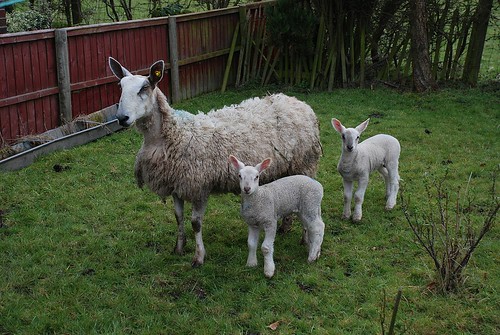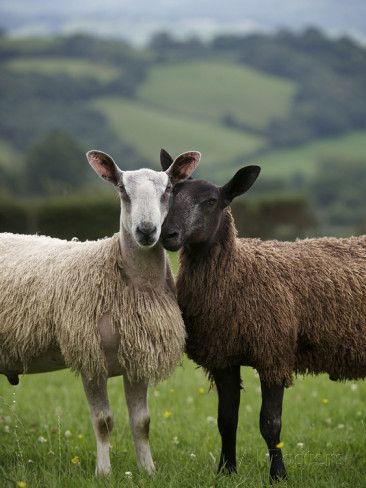 happy blue faced leicester sheep
happy blue faced leicester sheep
This week was a bit of a roller coaster ride: super hot because yeah it is summer here after all, and then, WOOOSH! back to 15degrees Celsius and so wet, the air is hard to breathe in because of all the moisture ! Thankfully, I dyed lots and lots last week and that got all nice and dry and ready for this weekends update! I really hope that next Fridays update will dry in time though with this wet air we are having …lol
The January Clubs were all shipped on Monday and lots of club members already messaged me that they received it! Yeah !!!! Sorry to all of you who are overseas: it may take a bit longer to get to you. Fingers crossed for deliveries at the speed of light !
This weekend will also see me starting the pigment prep and the blending and dyeing of all the February clubs ! I will start posting teaser labels of the February club next week on facebook and Instagram, so keep an eye out !
The January Clubs were all shipped on Monday and lots of club members already messaged me that they received it! Yeah !!!! Sorry to all of you who are overseas: it may take a bit longer to get to you. Fingers crossed for deliveries at the speed of light !
This weekend will also see me starting the pigment prep and the blending and dyeing of all the February clubs ! I will start posting teaser labels of the February club next week on facebook and Instagram, so keep an eye out !
For this weeks update I offer you a sheep breed that is not rare, but it is one of my favourite sheep fibres to spin ! It is so shiny, lofty, springy, has a good staple length and while it is soft, it is also quite durable , so great for socks and jumpers but shawls too! A very versatile fibre ! Blue Faced Leicester sheep blended with fantastic Mulberry Silk and Cashmere !
If you do not know a lot about the Blue Faced Leicester sheep, here is some information for you, together with a very interesting chat with Mr Stephenson from the Blue Faced Leicester Association. Enjoy the read !
According to the BFL Breeder’s Association, the fibre of the Blue Faced Leicester Sheep is around 20-25 microns, up to 6″ staple length. So not quite as fine as Merino and about 4 cms longer, which is why it gets that “Easy to spin!” label attached to it so often. Longwool sheep breeds are known for long, curly, lustrous fibre. While the Merino is fluffy, the BFL has ringlets. Kind of like the difference between a suri alpaca and a huacaya alpaca. The BFL I have isn’t quite so OMG-I-can’t-believe-how-soft-this-is as the Merino, but it’s soft enough for next-to-skin wear. Because of their curly locks BFL wool doesn’t have the same super crimp as Merino. This means yarn spun from it is a bit less elastic, less fluffy, with less memory. But it’s got two things that Merino doesn’t – drape and shine. Drape is kind of the opposite to memory. Instead of springing back into place, it hangs where it’s put, without the heaviness of alpaca.
The shine of the Blue Faced Leicester is a bonus feature. Ittakes the dye a lot easier, which means you get a lot more depth of colour or brightness. On top of the lack of crimp, the scales on the fibre are shaped differently, which also means it’s a bit harder to felt.
The Bluefaced Leicester evolved from a breeding scheme, to develop the Longwool sheep in the 1700's, by Robert Bakewell. Originally known as the Dishly Leicester. The breed was developed over the next 200 years and became commonly known as the Hexham Leicester due to it's early concentration in the North of England. Today it is known as the Bluefaced Leicester and is now the most popular crossing sire throughout the British isles. In 1963 the Bluefaced Leicester Sheep Breeders Association was formed to encourage the breeding and maintain the purity of the Bluefaced Leicester sheep. A flock book was also established. Today there are 1200 members with an average flock size of 20 ewes. The Bluefaced Leicester is regularly crossed with many of the native British breeds, particularly hill breeds such as Swaledale, Blackface, Welsh Mountain and Cheviot, to produce the Mule ewe. The term Mule sheep means any crossbred sired by a Bluefaced Leicester. The 'Mule ewe' now makes up almost half of the UK's crossbred ewe population.
It is estimated that Bluefaced Leicester rams sire Mule-type females from more than 40 native breeds – all with the inherent ability to be prolific, milk well and be naturally good mothers. Tracing back to the original Longwool “improver” rams developed by Robert Bakewell in Derbyshire almost 200 years ago, the Bluefaced Leicester is at the core of today’s sheep industry. More than half the UK’s breeding ewes are Mules and are sired by Bluefaced Leicester rams. From its stronghold in the North East and in Cumbria, where the pursuance of perfection has often become an all-consuming passion for generations of farming families, the addiction has spread far and wide, with Wales and Scotland now the home of many leading flocks. By far the widest use of Bluefaced Leicester rams is seen across flocks of Swaledale, Blackface and Welsh Mountain ewes to produce the North of England Mule, the Scotch Mule and the Welsh Mule. In the case of the North of England Mule it’s estimated that more than 200,000 ewe lambs are sold at auction every autumn. But breeders of Mule ewe lambs from north country hill-bred ewes have always prided themselves in one particular feature of the sheep they sell – their face markings.
In an age when farmers are encouraged to put performance figures first and eye-appeal second, breeders of North of England Mule sheep still set great store by the “pretty faces” of their lambs. Bluefaced Leicester rams from bloodlines able to produce the colour needed to create the striking black and white “butterfly” markings on Mule lambs have always been among the most sought after. But now a new version of the breed has become established.
The crossing-type Bluefaced Leicester is a far cry from how the breed looked 30 years ago, with many sheep now carrying colour on the face – almost mirroring their cross-bred progeny. Despite the split in the ranks of the breed over the two types being bred under the Bluefaced Leicester name, those responsible for producing this new version refute any claims that colour is taking their eye away from conformation.
Ironically, there was a time when a Bluefaced Leicester ram showing any sign of brown markings on its legs was considered unsuitable to breed from among the purists. But while premium prices have always been paid for North of England Mule ewe lambs with strikingly marked faces, it was soon obvious that change was inevitable. When some Swaledale flocks bought the “reject” coloured tups and found they produced more colour in their progeny, it triggered a rethink by radical Bluefaced Leicester breeders about the type of tups they needed to breed.
The outcome has been the development of this new type of Bluefaced Leicester. It has created two breeds with one name – the traditional blue-head type with white legs and no trace of any colour and the crossing type with markings on both legs and face. Exponents of both types defend their sheep vehemently. Breeders who have stayed true to the traditional type say they have steadily improved the conformation of their sheep.
As one breeder commented: “There are some traditional Bluefaced Leicester tups with back ends as good as any Texel’s.” Breeders of the crossing type believe they have sacrificed nothing in terms of conformation, but have gained much in producing rams capable of giving the desired face colour that Mule producers want in their lambs. While rumblings continue about the rights and wrongs of what’s happened to the Bluefaced Leicester and whether or not it should be officially split into two breeds, what are the implications for commercial sheep producers?
Bluefaced Leicester Sheep Association chairman Carl Stephenson, who farms in Co Durham, is adamant that the Bluefaced Leicester is still one breed. “It has developed into two types, but it’s not the colour on the skin that matters, it’s the blood that runs in the veins,” says Mr Stephenson. “First and foremost these sheep have got to have the right conformation, a good mouth and a good fleece and those who are breeding the crossing types carrying more colour are well aware of that.
“There’s still good demand for traditional Bluefaced Leicesters and last year saw a real resurgence, with a lot of traditional type tups bought for crossing,” says Mr Stephenson. While that may be the case, there are widening divisions in the two “type” camps.
Rumblings of the need for a separate breed society appear to have been quelled, but some shows are using two judges to assess the different types entered. Although the traditional blue-headed type has long been able to produce coloured faces on its lambs, the quest for more colour by using crossing-types could risk producing too much colour and even solid-faced Mule lambs. While it’s clear that many Bluefaced Leicester flocks are now favouring breeding the crossing type because of the demand from the largest number of buyers, it’s equally vital that the gene pool of traditional types is protected.
There is also a change in how colour in the fleece is perceived since smaller mills have been able to process smaller amounts of variations of fleece colours, instead of it all having to be white. Personally I think that is a good thing and it shows in the tops I offer you today: there are three different colours in the top: white, fawn and brown together with some of our angora bunny, gently gilded into a very nice spinnable tops. The Blue faced Leicester takes the dye beautifully and with 4 colours in the top it adds a lovely depth and nuance to the colours.
Although I love the cute markings of the face, I am a true believer of the traditional looks and qualities and colours of the fleeces, however: there are a lot of positives to be found "blending". it is a contentious subject in sheep breeders but at the same time a very exciting one.
Here are some photos of this amazing breed of sheep:
If you do not know a lot about the Blue Faced Leicester sheep, here is some information for you, together with a very interesting chat with Mr Stephenson from the Blue Faced Leicester Association. Enjoy the read !
According to the BFL Breeder’s Association, the fibre of the Blue Faced Leicester Sheep is around 20-25 microns, up to 6″ staple length. So not quite as fine as Merino and about 4 cms longer, which is why it gets that “Easy to spin!” label attached to it so often. Longwool sheep breeds are known for long, curly, lustrous fibre. While the Merino is fluffy, the BFL has ringlets. Kind of like the difference between a suri alpaca and a huacaya alpaca. The BFL I have isn’t quite so OMG-I-can’t-believe-how-soft-this-is as the Merino, but it’s soft enough for next-to-skin wear. Because of their curly locks BFL wool doesn’t have the same super crimp as Merino. This means yarn spun from it is a bit less elastic, less fluffy, with less memory. But it’s got two things that Merino doesn’t – drape and shine. Drape is kind of the opposite to memory. Instead of springing back into place, it hangs where it’s put, without the heaviness of alpaca.
The shine of the Blue Faced Leicester is a bonus feature. Ittakes the dye a lot easier, which means you get a lot more depth of colour or brightness. On top of the lack of crimp, the scales on the fibre are shaped differently, which also means it’s a bit harder to felt.
The Bluefaced Leicester evolved from a breeding scheme, to develop the Longwool sheep in the 1700's, by Robert Bakewell. Originally known as the Dishly Leicester. The breed was developed over the next 200 years and became commonly known as the Hexham Leicester due to it's early concentration in the North of England. Today it is known as the Bluefaced Leicester and is now the most popular crossing sire throughout the British isles. In 1963 the Bluefaced Leicester Sheep Breeders Association was formed to encourage the breeding and maintain the purity of the Bluefaced Leicester sheep. A flock book was also established. Today there are 1200 members with an average flock size of 20 ewes. The Bluefaced Leicester is regularly crossed with many of the native British breeds, particularly hill breeds such as Swaledale, Blackface, Welsh Mountain and Cheviot, to produce the Mule ewe. The term Mule sheep means any crossbred sired by a Bluefaced Leicester. The 'Mule ewe' now makes up almost half of the UK's crossbred ewe population.
It is estimated that Bluefaced Leicester rams sire Mule-type females from more than 40 native breeds – all with the inherent ability to be prolific, milk well and be naturally good mothers. Tracing back to the original Longwool “improver” rams developed by Robert Bakewell in Derbyshire almost 200 years ago, the Bluefaced Leicester is at the core of today’s sheep industry. More than half the UK’s breeding ewes are Mules and are sired by Bluefaced Leicester rams. From its stronghold in the North East and in Cumbria, where the pursuance of perfection has often become an all-consuming passion for generations of farming families, the addiction has spread far and wide, with Wales and Scotland now the home of many leading flocks. By far the widest use of Bluefaced Leicester rams is seen across flocks of Swaledale, Blackface and Welsh Mountain ewes to produce the North of England Mule, the Scotch Mule and the Welsh Mule. In the case of the North of England Mule it’s estimated that more than 200,000 ewe lambs are sold at auction every autumn. But breeders of Mule ewe lambs from north country hill-bred ewes have always prided themselves in one particular feature of the sheep they sell – their face markings.
In an age when farmers are encouraged to put performance figures first and eye-appeal second, breeders of North of England Mule sheep still set great store by the “pretty faces” of their lambs. Bluefaced Leicester rams from bloodlines able to produce the colour needed to create the striking black and white “butterfly” markings on Mule lambs have always been among the most sought after. But now a new version of the breed has become established.
The crossing-type Bluefaced Leicester is a far cry from how the breed looked 30 years ago, with many sheep now carrying colour on the face – almost mirroring their cross-bred progeny. Despite the split in the ranks of the breed over the two types being bred under the Bluefaced Leicester name, those responsible for producing this new version refute any claims that colour is taking their eye away from conformation.
Ironically, there was a time when a Bluefaced Leicester ram showing any sign of brown markings on its legs was considered unsuitable to breed from among the purists. But while premium prices have always been paid for North of England Mule ewe lambs with strikingly marked faces, it was soon obvious that change was inevitable. When some Swaledale flocks bought the “reject” coloured tups and found they produced more colour in their progeny, it triggered a rethink by radical Bluefaced Leicester breeders about the type of tups they needed to breed.
The outcome has been the development of this new type of Bluefaced Leicester. It has created two breeds with one name – the traditional blue-head type with white legs and no trace of any colour and the crossing type with markings on both legs and face. Exponents of both types defend their sheep vehemently. Breeders who have stayed true to the traditional type say they have steadily improved the conformation of their sheep.
As one breeder commented: “There are some traditional Bluefaced Leicester tups with back ends as good as any Texel’s.” Breeders of the crossing type believe they have sacrificed nothing in terms of conformation, but have gained much in producing rams capable of giving the desired face colour that Mule producers want in their lambs. While rumblings continue about the rights and wrongs of what’s happened to the Bluefaced Leicester and whether or not it should be officially split into two breeds, what are the implications for commercial sheep producers?
Bluefaced Leicester Sheep Association chairman Carl Stephenson, who farms in Co Durham, is adamant that the Bluefaced Leicester is still one breed. “It has developed into two types, but it’s not the colour on the skin that matters, it’s the blood that runs in the veins,” says Mr Stephenson. “First and foremost these sheep have got to have the right conformation, a good mouth and a good fleece and those who are breeding the crossing types carrying more colour are well aware of that.
“There’s still good demand for traditional Bluefaced Leicesters and last year saw a real resurgence, with a lot of traditional type tups bought for crossing,” says Mr Stephenson. While that may be the case, there are widening divisions in the two “type” camps.
Rumblings of the need for a separate breed society appear to have been quelled, but some shows are using two judges to assess the different types entered. Although the traditional blue-headed type has long been able to produce coloured faces on its lambs, the quest for more colour by using crossing-types could risk producing too much colour and even solid-faced Mule lambs. While it’s clear that many Bluefaced Leicester flocks are now favouring breeding the crossing type because of the demand from the largest number of buyers, it’s equally vital that the gene pool of traditional types is protected.
There is also a change in how colour in the fleece is perceived since smaller mills have been able to process smaller amounts of variations of fleece colours, instead of it all having to be white. Personally I think that is a good thing and it shows in the tops I offer you today: there are three different colours in the top: white, fawn and brown together with some of our angora bunny, gently gilded into a very nice spinnable tops. The Blue faced Leicester takes the dye beautifully and with 4 colours in the top it adds a lovely depth and nuance to the colours.
Although I love the cute markings of the face, I am a true believer of the traditional looks and qualities and colours of the fleeces, however: there are a lot of positives to be found "blending". it is a contentious subject in sheep breeders but at the same time a very exciting one.
Here are some photos of this amazing breed of sheep:
Please don't hesitate to contact me at any time if you have any questions okay? Always happy to enable. All my contact details are to be found at the end of this week’s blog entry. Have fun !!!
Blue Faced Leicester, Mulberry Silk Cashmere Tops
100+gram top AU$25
 |

Galapagos SOLD
 |

Gothic Velvet 2 available

 |

Indigo Night (Dyed with homegrown Japanese Indigo)
Sold

Sold
 |

Rio Carnival 4 left

 |

Sky (dyed with homegrown woad) SOLD

 |

Cosmic Wave 4 left


 |

Happy ! 4 left

 |

Bee Sanctuary 3 left
 |
 |
| Gem Corn Magic (4 pending) |
 |

Selkies SOLD
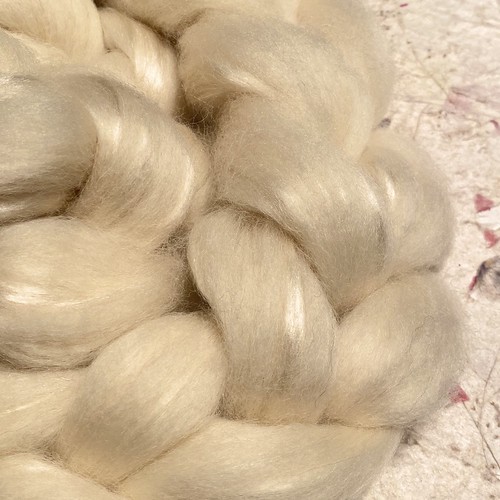

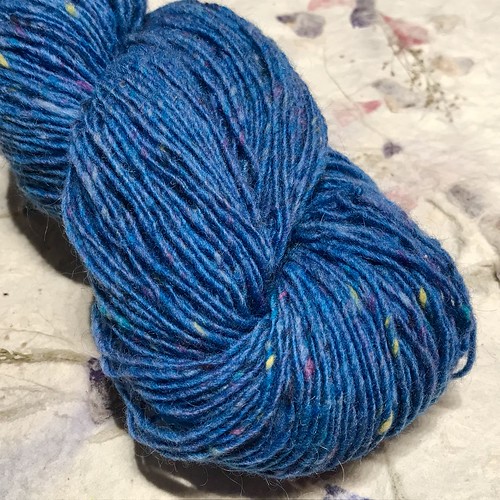
 |

Natural

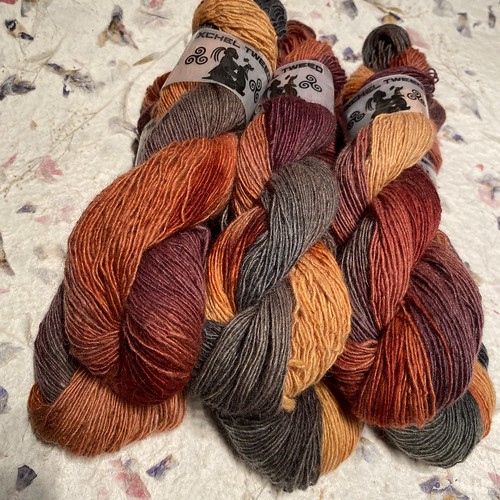
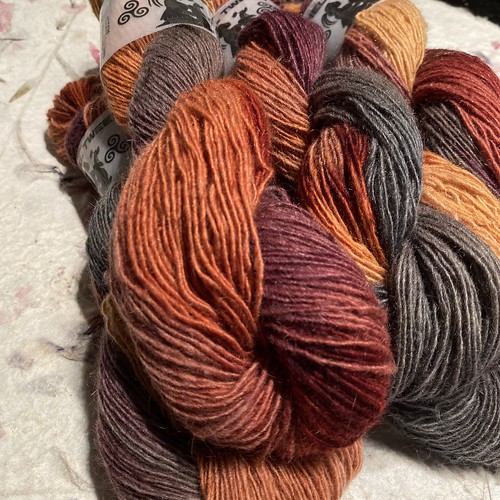
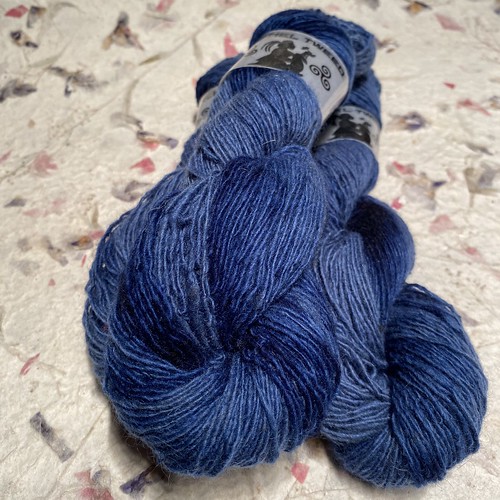








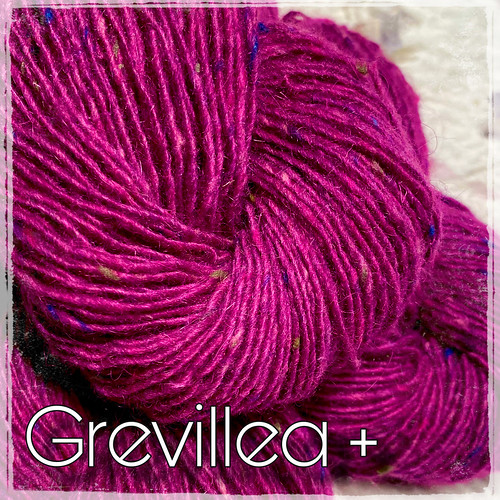
 |

Girl Power ! 1 left
To order: email or message me on facebook or Instagram, quoting the colourway and the quantity you would like, together with your postal address and I will get right back to you with all the payment details.
IxCHeL Tweed Yarn
Hand dyed
Super soft lambs wool 70% and Kid Mohair 30%
Spun singles, fingering or sock weight yarn
+/- 200meters/218yards
50grams 1.76oz
AU$18


Botanical dyes
(dyed with Eucalypt, Madder root, Walnut, Elderberry, Indigo,Acorn)


Indigo


Unicorn Speckles


Jewels
NEW NEW NEW NEW colours !!!
IxCHeL Tweed Yarn
Super soft lambs wool 70% and Kid Mohair 30%
Spun singles, fingering or sock weight yarn
+/- 200meters/218yards
50grams 1.76oz
AU$16


Nephrite Jade
(A beautiful deep sage green colour with fun blue, lime and salmon speckles)


Grevillea + new !
A vibrant raspberry pink tweed with deep purple, lime and soft pink speckles)
To order: email or message me on facebook, Ravelry or Instagram, quoting the colourway and the quantity you would like, together with your postal address and I will get right back to you with all the payment details.
IxCHeL Tweed fingering weight yarn
Super soft lambs wool 70% and Kid Mohair 30%
Spun singles, fingering or sock weight yarn
+/- 200meters/218yards
50grams 1.76oz
AU$16


Great Barrier Reef




Leafy Seadragon




Flying Fox
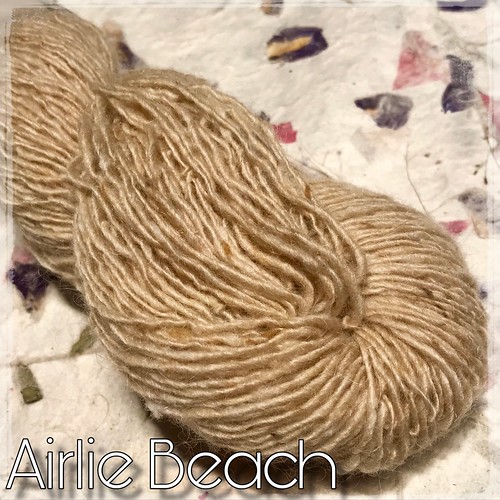



Airlie Beach




Sea Mist





Amethyst


 Kata Tjuta BACK IN STOCK !!!
Kata Tjuta BACK IN STOCK !!!
(an intense pure red that goes well with the Kookaburra and the Wattle and the Amethyst colourway and soooooo many others)

 Kookaburra
Kookaburra
(a beautiful silver grey with ochre accents that complement the dingo colourway)

 Dingo
Dingo
( A beautiful warm honey ochre with pops of royal bluebell, kingfisher and kangaroo paw)

 Dusky Grevillea
Dusky Grevillea
(a gorgeous raspberry base with pops of royal bluebell, flowering gum, grey and daintree)


 Fern Forest
Fern Forest
( a deep forest green with accents of bright red, dusky purple and daintree) )

 Jacarandah
Jacarandah
( a fabulous deep purple with accents of royal bluebell, daintree, grevillea and kingfisher )

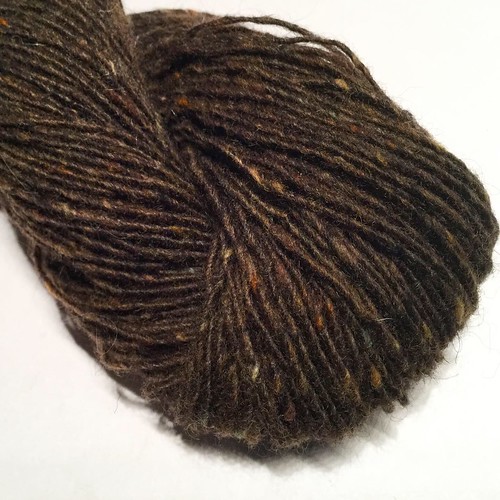 Wombat
Wombat
( a fabulous deep walnut brown with accents of dingo and kookaburra)

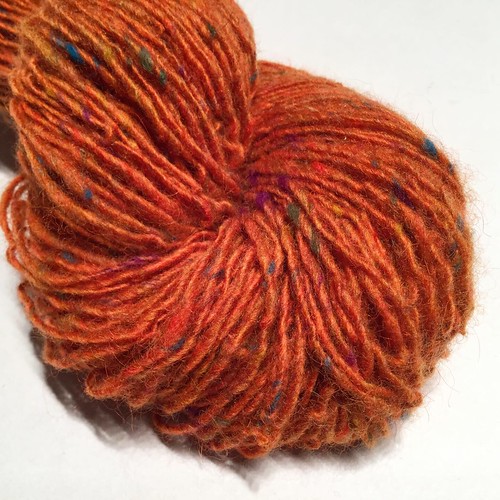 Kangaroo Paw
Kangaroo Paw
( a fabulous warm orange with accents of fern forest, royal bluebell and grevillea and dingo )


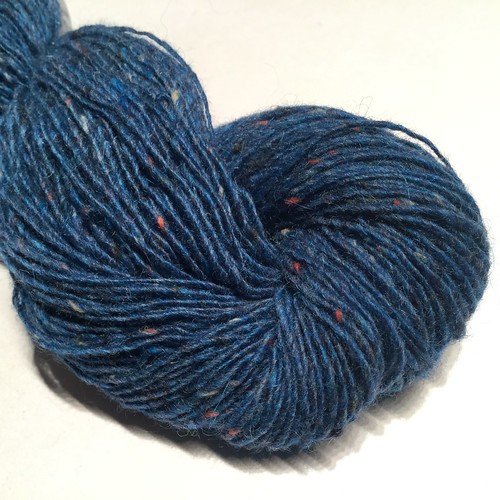 Royal Bluebell
Royal Bluebell
( a deep blue with accents of flowering gum, kookaburra and fern forest )

 Wallaby
Wallaby
( a warm light brown with accents of soft blue and kookaburra)

 Daintree ( a soft green with accents of fern forest and dingo)
Daintree ( a soft green with accents of fern forest and dingo)
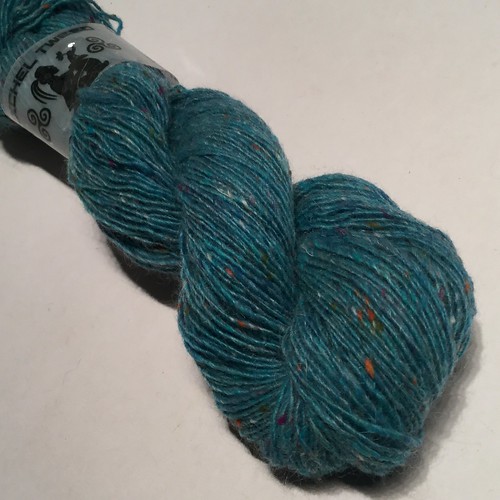
 Kingfisher
Kingfisher
( a fabulous Turquoise blue with accents of fern forest, kangaroo paw, Jacaranda and Grevillea)

Want to dye your own with easy to use acid dyes? I have been selling these Landscape dyes at my workshops and shows for a long time : They are extremely easy to use and come in great shades.

Wattle
(A beautiful sunshine yellow that goes so well with the kookaburra the silver grey)
(A beautiful sunshine yellow that goes so well with the kookaburra the silver grey)

 Kata Tjuta BACK IN STOCK !!!
Kata Tjuta BACK IN STOCK !!!(an intense pure red that goes well with the Kookaburra and the Wattle and the Amethyst colourway and soooooo many others)

 Kookaburra
Kookaburra(a beautiful silver grey with ochre accents that complement the dingo colourway)

 Dingo
Dingo( A beautiful warm honey ochre with pops of royal bluebell, kingfisher and kangaroo paw)

 Dusky Grevillea
Dusky Grevillea(a gorgeous raspberry base with pops of royal bluebell, flowering gum, grey and daintree)

Flowering Gum
( a gorgeous medieval warm red with bright red, kookaburra and fern forest accents)
( a gorgeous medieval warm red with bright red, kookaburra and fern forest accents)

 Fern Forest
Fern Forest ( a deep forest green with accents of bright red, dusky purple and daintree) )

 Jacarandah
Jacarandah ( a fabulous deep purple with accents of royal bluebell, daintree, grevillea and kingfisher )

 Wombat
Wombat( a fabulous deep walnut brown with accents of dingo and kookaburra)

 Kangaroo Paw
Kangaroo Paw ( a fabulous warm orange with accents of fern forest, royal bluebell and grevillea and dingo )

isn’t it gorgeous how the Kangaroo paw knits up?! )

 Royal Bluebell
Royal Bluebell ( a deep blue with accents of flowering gum, kookaburra and fern forest )

 Wallaby
Wallaby( a warm light brown with accents of soft blue and kookaburra)

 Daintree ( a soft green with accents of fern forest and dingo)
Daintree ( a soft green with accents of fern forest and dingo)
 Kingfisher
Kingfisher ( a fabulous Turquoise blue with accents of fern forest, kangaroo paw, Jacaranda and Grevillea)
Landscape dyes

100g tubs AU$12
250 g tubs AU$27
250 g tubs AU$27
Just contact me with the name of the colour you are after and I will get right back to you.
All my contact details are here:
Please don't hesitate to contact me at any time if you have any questions okay? Always happy to enable. All my contact details are to be found at the end of this week’s blog entry.
Have a fun weekend !!!
Have a fun weekend !!!
How To Order:
1. You can email me on ixchelbunnyart at gmail dot com or ixchelbunny at yahoo dot com dot au
2. Message me on facebook or
3. Message me on www.ravelry.com where I am ixchelbunny.
4. message me on Instagram where I am @ixchelbunny
I will email you right back with all your order details and payment methods.
Any questions? Any custom orders for yarn or dyeing fibre? : Please don’t hesitate to ask! Always happy to enable.
2. Message me on facebook or
3. Message me on www.ravelry.com where I am ixchelbunny.
4. message me on Instagram where I am @ixchelbunny
I will email you right back with all your order details and payment methods.
Any questions? Any custom orders for yarn or dyeing fibre? : Please don’t hesitate to ask! Always happy to enable.
Keep your eyes out for any news on the
ixchelbunny Instagram feed and the IxCHeL facebook page!!
RABBIT ON !
((hugs))
Charly


